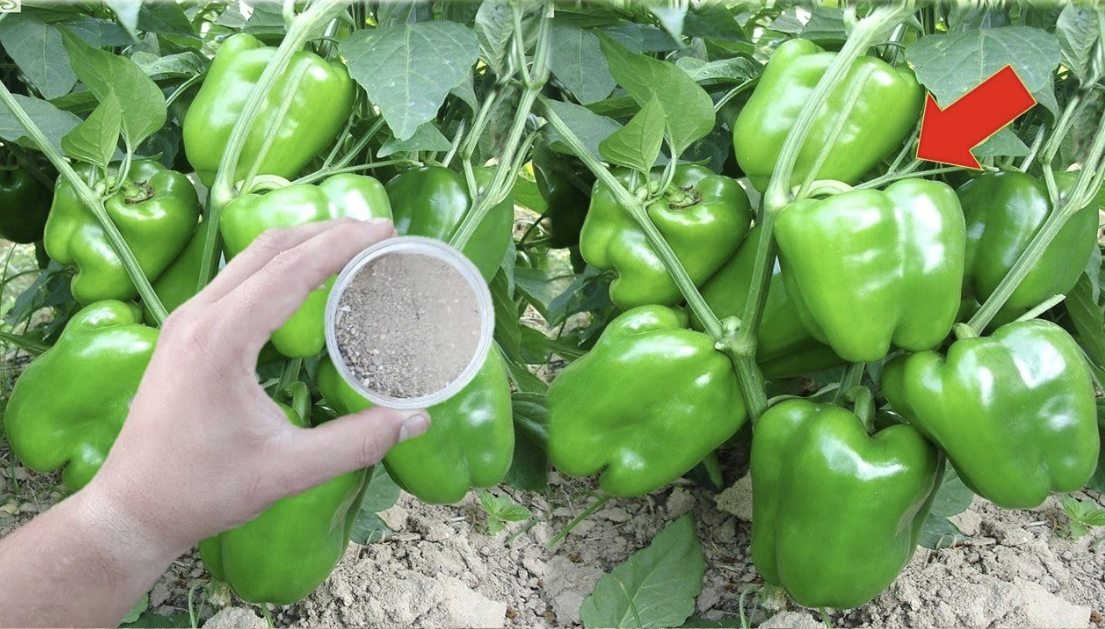
Dodici consigli e trucchi per coltivare i peperoni nel tuo orto
It takes peppers two to three months to develop, so growing them from seedlings offers them a head start over planting them from seeds. Peppers are also a summer vegetable.
Young peppers do not thrive in conditions that are too chilly. During the day, you should take them outside, but at night, you should bring them inside so that they are not exposed to the cold. This will help them get used to being outside. They ought to be ready to be planted after a few weeks have passed first.
4- Sow seeds of pepper plants.
At a minimum of 15 degrees Celsius throughout the night, you will be able to plant your peppers in the garden. Before planting your pepper plants, you may warm the soil by covering it with black plastic for a week. This will allow the soil to stay warm.
They should be planted no deeper than they were in the pots when you are planting them. It is not preferable to plant peppers in a deep hole. Set them around 45 to 60 centimeters apart.
5). Selecting the appropriate friends for your pepper garden
The peppers should be planted next to the tomatoes. Tomatoes are beneficial to peppers because they prevent soil microorganisms and pests from damaging them.
It is also possible to grow peppers in close proximity to cucumbers, carrots, eggplants, and onions. Planting geraniums or petunias next to peppers will help minimize the impact of bugs on your garden.
Basil thrives in close proximity to peppers and deters insects from pests. Aphids are repelled by some species of wasps, which are attracted to parsley and attract pollinators.
It is best to avoid growing mustard, cabbage, or broccoli plants in close proximity to your peppers. Additionally, red peppers should not be planted in close proximity to green beans or fennel.
6) Supports the
There is no need to stake the peppers; but, doing so might help to keep them off the ground. The drooping of your plants makes them more vulnerable to insect pests and bacteria that live in the soil.
7) Create a wonderful mulch
In order to maintain a warm environment and ensure that the soil is well-drained, it is vital to mulch the pepper plants. In order to maintain a warm soil temperature, a dark mulch is able to absorb more heat from the sun.
In addition, peppers like short grass. The use of lawn mulch may assist prevent weeds from rapidly infiltrating your garden and causing damage to the roots of your plants.
8) Accurate watering system
Peppers need a significant amount of water, from two to five centimeters of water every week. The quantity of water that is collected from rain should be monitored using a rain gauge, and more water should be added if it is required.
It may be necessary to water your plants twice a day if you live in a warm region or if the weather is really hot. Bitterness may develop in your peppers if they are allowed to dry out too much.
D’altra parte, un’irrigazione eccessiva potrebbe far marcire le radici o far marcire i fiori.
9) Tagliare alcune piante di peperone
Eliminare i primi fiori che ogni pianta ha prodotto. Per questo motivo, la pianta è costretta a dedicare le sue energie alla crescita dell’intera pianta piuttosto che a quella di un singolo frutto.
Se lo fai, la pianta sarà in grado di produrre più peperoni in futuro, il che si tradurrà in un raccolto maggiore.
10) Il fertilizzante
Il tuo giardino dovrebbe essere fertilizzato, ma dovresti aspettare che i peperoni inizino a svilupparsi prima di farlo. È importante cercare un fertilizzante che non contenga una quantità significativa di azoto poiché i peperoni non apprezzano molto azoto. Quando c’è una quantità eccessiva di azoto nel terreno, la pianta può produrre più foglie anziché fiori e peperoni.
11) Insetti indesiderati
Sia gli afidi che le pulci sono dipendenti dai peperoni. Se scopri che i tuoi peperoni vengono attaccati da questi parassiti, dovresti utilizzare un pesticida biologico che non sia dannoso per le piante vegetali.
12) Raccogliere tutti i peperoni
Dopo circa sessanta-novanta giorni dal momento della semina, i peperoni verdi sono pronti per essere raccolti. I peperoni vanno raccolti quando hanno raggiunto la dimensione e il colore desiderati. Saranno prima verdi e poi diventeranno cremisi. Il peperone avrà un livello più elevato di vitamina C e un sapore più dolce se rimarrà sulla pianta per un periodo di tempo più lungo.
Usa un coltello per tagliare il frutto, ma assicurati di lasciare circa due centimetri del gambo del peperone sulla pianta. Ciò eviterà che la pianta venga danneggiata.
Se segui queste linee guida, quest’anno sarai in grado di raccogliere una quantità abbondante di peperoni. I peperoni sono piuttosto semplici da coltivare, tuttavia i seguenti semplici consigli ti aiuteranno a mantenere la salute delle tue piante e ad aumentare la quantità di peperoni che producono.
